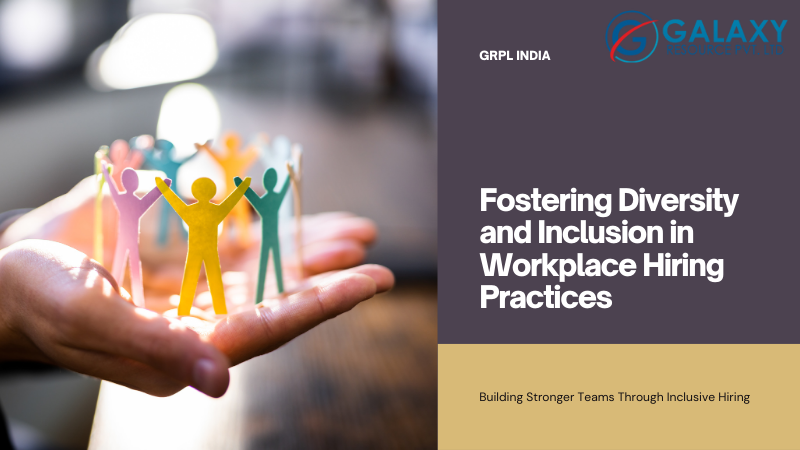28 Jul The Importance of Diversity and Inclusion in Hiring

The Importance of Diversity and Inclusion in Hiring
In today’s globalized world, diversity and inclusion (D&I) have become crucial elements of successful businesses. Companies that prioritize D&I in their hiring processes not only create a more equitable workplace but also benefit from a wide range of perspectives and experiences. Here’s why diversity and inclusion are essential in hiring and how they can positively impact your organization.
1. Broader Range of Perspectives and Ideas
A diverse workforce brings together people from different backgrounds, cultures, and experiences. This diversity of thought leads to more creative and innovative solutions. When employees with varied perspectives collaborate, they can approach problems from multiple angles, leading to more effective and well-rounded outcomes. Inclusion ensures that all voices are heard and valued, fostering an environment where ideas can flourish.
2. Enhanced Company Reputation
Companies that are known for their commitment to diversity and inclusion often enjoy a stronger reputation. Job seekers, especially millennials and Gen Z, are increasingly looking for employers who value D&I. A positive reputation for inclusivity can attract top talent and set your company apart from competitors. Additionally, customers and clients are more likely to support businesses that demonstrate social responsibility and inclusivity.
3. Improved Employee Performance and Satisfaction
Inclusive workplaces where diversity is celebrated tend to have higher levels of employee engagement and satisfaction. When employees feel valued and respected for their unique contributions, they are more likely to be motivated and committed to their work. This leads to increased productivity and a positive workplace culture. Diversity and inclusion also reduce turnover rates, as employees are more likely to stay with a company that appreciates and supports them.
4. Better Decision Making
Diverse teams are known to make better decisions. A study by Cloverpop found that diverse teams outperformed individual decision-makers up to 87% of the time. The variety of perspectives in a diverse team leads to more thorough and balanced decision-making processes. Inclusive practices ensure that all team members contribute to discussions, resulting in well-considered decisions that take into account a broader range of factors.
5. Access to a Wider Talent Pool
By prioritizing diversity and inclusion in hiring, companies can access a wider talent pool. Limiting recruitment to a narrow demographic can result in missed opportunities to hire exceptional talent. Inclusive hiring practices ensure that job postings reach a diverse audience and that the selection process is free from biases. This broadens the scope of potential candidates and increases the likelihood of finding the best fit for the role.
How to Implement Diversity and Inclusion in Hiring
- Create Inclusive Job Descriptions:
- Use gender-neutral language and avoid jargon that might exclude certain groups. Clearly state your commitment to diversity and inclusion in the job posting.
- Expand Recruitment Channels:
- Use diverse job boards, community organizations, and social media platforms to reach a broader audience. Partner with universities and professional associations that serve underrepresented groups.
- Implement Unconscious Bias Training:
- Provide training for hiring managers and recruiters to recognize and mitigate unconscious biases. This ensures a fair and objective selection process.
- Use Diverse Interview Panels:
- Include employees from different backgrounds and departments in the interview process. Diverse panels can provide a more balanced assessment of candidates.
- Standardize Interview Questions:
- Use a consistent set of questions for all candidates to ensure a fair comparison. Focus on skills, experience, and cultural add rather than fit.
- Promote a Culture of Inclusion:
- Foster an inclusive work environment where all employees feel valued. Encourage diverse perspectives and create opportunities for employees to share their experiences.
- Set D&I Goals and Measure Progress:
- Establish clear diversity and inclusion goals and track your progress. Regularly review your hiring practices and make adjustments as needed to improve D&I outcomes.
Conclusion
Diversity and inclusion are not just buzzwords; they are essential components of a successful hiring strategy. By embracing D&I, companies can benefit from a wider range of perspectives, enhanced innovation, and a stronger reputation. Creating an inclusive workplace where all employees feel valued leads to higher engagement, better decision-making, and access to a broader talent pool. Prioritizing diversity and inclusion in hiring is not only the right thing to do but also a strategic advantage for any organization.


No Comments